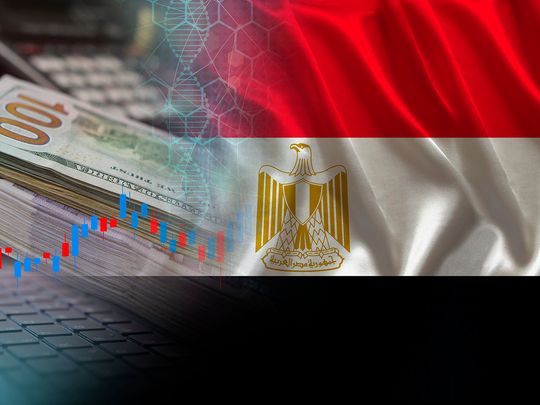
Given its political and strategic significance, Egypt's stability and economic recovery is of paramount importance for the entire Middle East. Any changes affecting Egypt reverberate across neighbouring countries, even as the GCC nations remain deeply invested in the stability and advancement of its economy.
Egypt recently faced significant challenges stemming from a variety of factors, including structural economic issues that are addressable and much broader – and tumultuous - developments. Primarily, we'll focus on economic aspects, as is common in developing countries where the economy’s management grapples with the imbalance between modest growth rates and rapid population growth.
This imbalance results in a distribution of resources over a larger population, necessitating solutions that must strike a balance through targeted development policies aimed at bolstering growth to meet the demands of population growth. This is a challenge faced by many developing countries, each with varying capacities to address it.
UAE’s $35b support
Egypt, however, possesses opportunities to bridge this gap, especially after being given substantial aid from Gulf countries, including the recent $35 billion package from the UAE. These injections of capital have yielded immediate and positive impact, particularly in bolstering confidence in the economy. Moody's, the credit rating agency, responded by upgrading its outlook on the Egyptian economy to positive.
In light of these developments, financial institutions like JPMorgan have recommended purchasing Egyptian Treasury bills. There are strong indications that investors are poised to re-enter the Cairo stock market, buoyed by the significant support and proactive measures taken. Additional support from entities such as the IMF ($8 billion) and the European Union ($7.8 billion) has contributed to attracting local and foreign investments.
This is further amplified by the agreement on a strategic partnership between Egypt and the EU.
Therefore, Egypt stands at an exceptional juncture to overcome its many challenges and propel the economy towards rapid growth while addressing structural imbalances critical to attract local and foreign private sector investment.
This, in turn, fosters the development of numerous vital sectors, creating additional jobs and elevating living standards. For instance, the support from the UAE is poised to spur the creation of labour-intensive projects, pivotal to tackle unemployment.
The new aid also presents opportunities to support the Egyptian currency, which had earlier depreciated due to monetary factors and speculation, exacerbated by attempts to manipulate the situation to deteriorate the pound, leading to heightened inflation and soaring prices. However, the aid package and increased dollar flows - including remittances from expats and the redirection of local dollar holders to sell to local banks - offer avenues to stabilise the currency and mitigate economic volatility.
Bridging budgetary gaps
In another crucial aspect, the funding support will play a pivotal role in bridging the budgetary gap for a four-year period, as stated by Goldman Sachs. This underscores the necessity to address structural imbalances plaguing the economy and minimise the financial gaps that adversely impact key metrics, particularly the national currency.
Previous Gulf aid - notably from the UAE, Saudi Arabia and Kuwait, totaling over $100 billion in the past decade - significantly contributed to stabilising economic conditions, including the exchange rate. However, the persistence of imbalances swiftly impeded any sustainable recovery at the time.
To navigate this challenge, it is imperative to draw lessons from past experiences, leverage the substantial support from the Gulf, and the economic capabilities inherent in the Egyptian economy. This includes harnessing the potential of the private sector, which possesses the capacity to contribute significantly once obstacles are removed and necessary incentives are provided to attract diverse investments.













